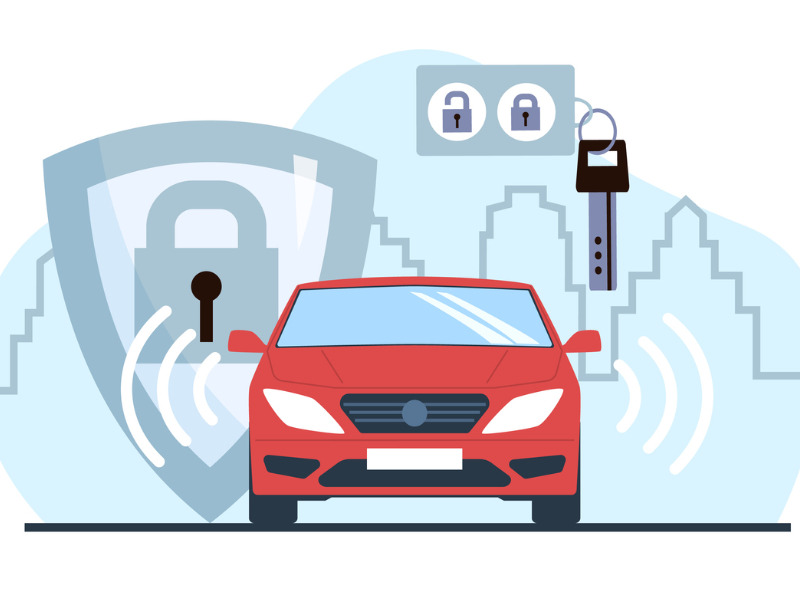How Canadian P&C insurers are tackling record auto thefts

After the Canadian P&C insurance industry paid out a record $1 billion for auto theft in 2022, some insurers are tackling the issue by offering discounts for consumers installing a tracking system or applying surcharges for those who don’t equip an anti-theft device.
Since the beginning of the year, six different insurer partners of Ontario-based brokerage Mitch Insurance have added incentives or discounts and/or applied a surcharge, the brokerage’s retention manager, Cassie Gilroy, confirmed to Canadian Underwriter in an interview.
The insurers have taken different approaches. For example, some are offering free installation ($400 value) of anti-theft devices such as the Tag tracker for customers who own often-stolen vehicles in high-theft areas.
Tag is a Bluetooth vehicle tracking and recovery system that has “proven to be effective in frustrating thieves’ efforts to circumvent traditional security systems and return stolen vehicles to their rightful owners,” Mitch Insurance said in a blog post. “Insurers have expressed an openness to extending the incentives to other tracking systems, but at this point they say that the Tag system is the only one with a proven track record.”
Other carriers are applying a $500 annual insurance surcharge to drivers who own oft-stolen vehicles who don’t install Tag or another anti-theft device, such as a steering wheel/brake pedal lock, or wheel and tire lock.
In addition to incentives and surcharges, Mitch Insurance has heard anecdotally that a couple of other insurers are working on anti-theft solutions. “We are expecting that this is going to become a little bit more widespread than what we’re seeing right now,” Gilroy told CU.
iStock.com/lorado
Insurance Bureau of Canada (IBC) told Canadian Underwriter that it could not speak to an individual insurers’ requirements or recommendations for its policyholders.
However, IBC acknowledged “many insurers are taking proactive steps to mitigate the significant increase in auto thefts, and some have started offering, free of charge, approved aftermarket tracking devices — the purchase and installation of which is valued in the hundreds of dollars.”
The industry uses the Canadian Loss Experience Automobile Rating (CLEAR) system as a factor in determining auto insurance premiums. For example, a vehicle with a lower CLEAR ranking could indicate a lower theft risk, perhaps because it was manufactured with stronger anti-theft devices, IBC said.
“Generally, the harder your car is to steal and the less expensive it is to repair, the less you pay for insurance,” IBC said. “This incentivizes policyholders to select vehicles that face a lower likelihood of loss, like theft, or to take target-hardening steps to reduce their vehicle’s risk level.”
Each insurer has its own list of vehicles and model years subject to surcharges or installation incentives/discounts. However, the lists tend to be similar and mirror the Top 10 Stolen Vehicles in Canada list compiled every year by Équité Association, Mitch Insurance reported. For example, last year’s list had the Honda CR-V, Lexus RX series and the Ford F-150 series as the Top 3 stolen vehicles.
Over time, the list may change, Gilroy said, but now it’s based on statistics and data, plus an insurer’s own personal experience as a company.
“If we see that the vehicles change and a different model that isn’t on the list seems to be topping the charts of the vehicles stolen, [insurers] may pivot and say, ‘Okay, we’re no longer looking at these vehicles because they seem to be coming off the radar, we’re now going to look at a different model type,’” she said. “We just don’t know.”
Surcharges mostly began effective this month, so Mitch Insurance has just started having conversations with clients. “The more it’s going to cost them to remove the surcharge the harder the conversation is, obviously,” Gilroy said. “Right now, it’s really just a matter of providing options.
‘You can stay with this company and not install [an anti-theft device] and pay this price. You can stay with this company, install the anti-theft system and have that protection and remove the $500 surcharge. Or we can look to other markets and see what other prices are available for you.’”
Ripple effect
Gilroy acknowledges that clients who may already be distressed about a rate increase won’t be pleased about an additional $500 surcharge when their vehicle’s never been stolen. “And now that it’s having a financial impact on insureds, it’s going to cause some ruffles and some ripples.”
But Gilroy said the issue is opening the door for brokers to have conversations with clients. She cited the example of one client with a Honda CR-V who was not aware that the vehicle had a high theft possibility. “They’re actually aware of this now and then they can make choices in their life that help reduce their risk.”
A recent report from Équité Association said all provinces are seeing an increase in vehicle thefts year-over-year (YoY), with Ontario (48.3% increase from 2021 to 2022) and Quebec (50% increase from 2021 to 2022) leading the way. Alberta saw an 18% YoY increase, with the remaining provinces seeing increases between about 27% and 57%.
“According to Équité Association… theft claims costs in Ontario, for example, were approximately $700 million in 2022, up from approximately $160 million in 2018, a staggering 329% increase,” IBC reported.
Feature image by iStock.com/Olga Kurbatova







